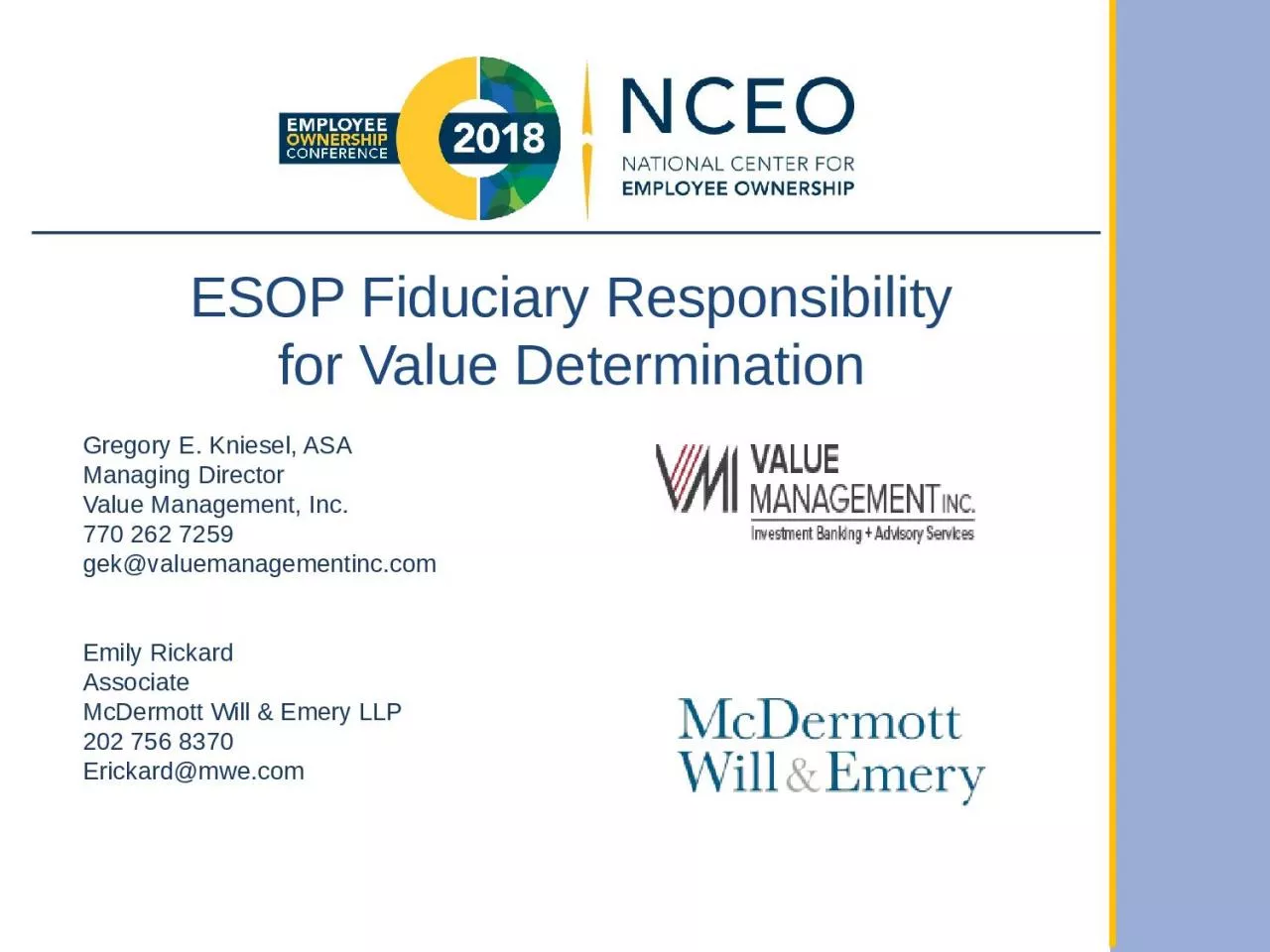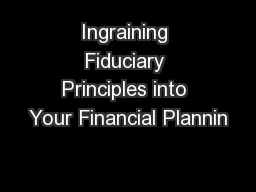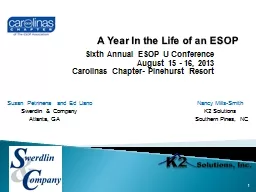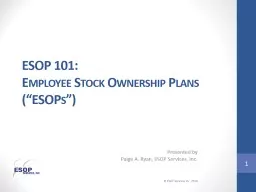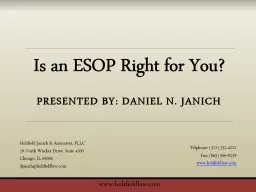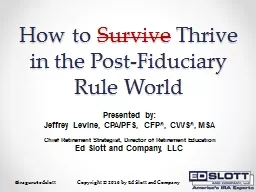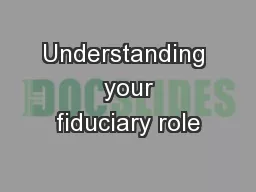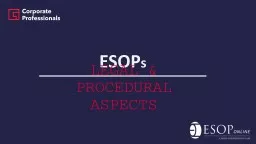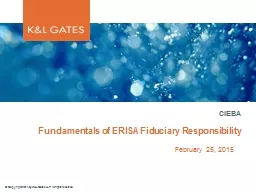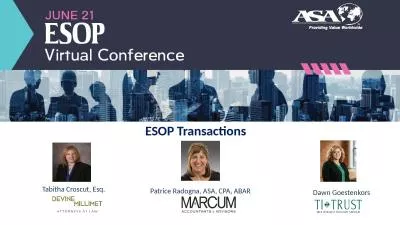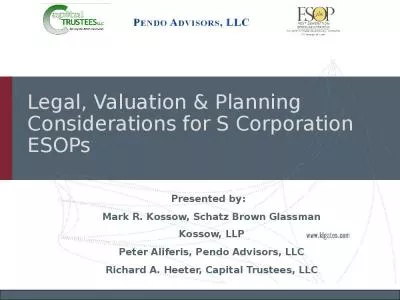PPT-ESOP Fiduciary Responsibility for Value Determination
Author : SugarPlumFairy | Published Date : 2022-08-02
Gregory E Kniesel ASA Managing Director Value Management Inc 770 262 7259 gekvaluemanagementinccom Emily Rickard Associate McDermott Will amp Emery LLP 202 756
Presentation Embed Code
Download Presentation
Download Presentation The PPT/PDF document "ESOP Fiduciary Responsibility for Value ..." is the property of its rightful owner. Permission is granted to download and print the materials on this website for personal, non-commercial use only, and to display it on your personal computer provided you do not modify the materials and that you retain all copyright notices contained in the materials. By downloading content from our website, you accept the terms of this agreement.
ESOP Fiduciary Responsibility for Value Determination: Transcript
Download Rules Of Document
"ESOP Fiduciary Responsibility for Value Determination"The content belongs to its owner. You may download and print it for personal use, without modification, and keep all copyright notices. By downloading, you agree to these terms.
Related Documents

